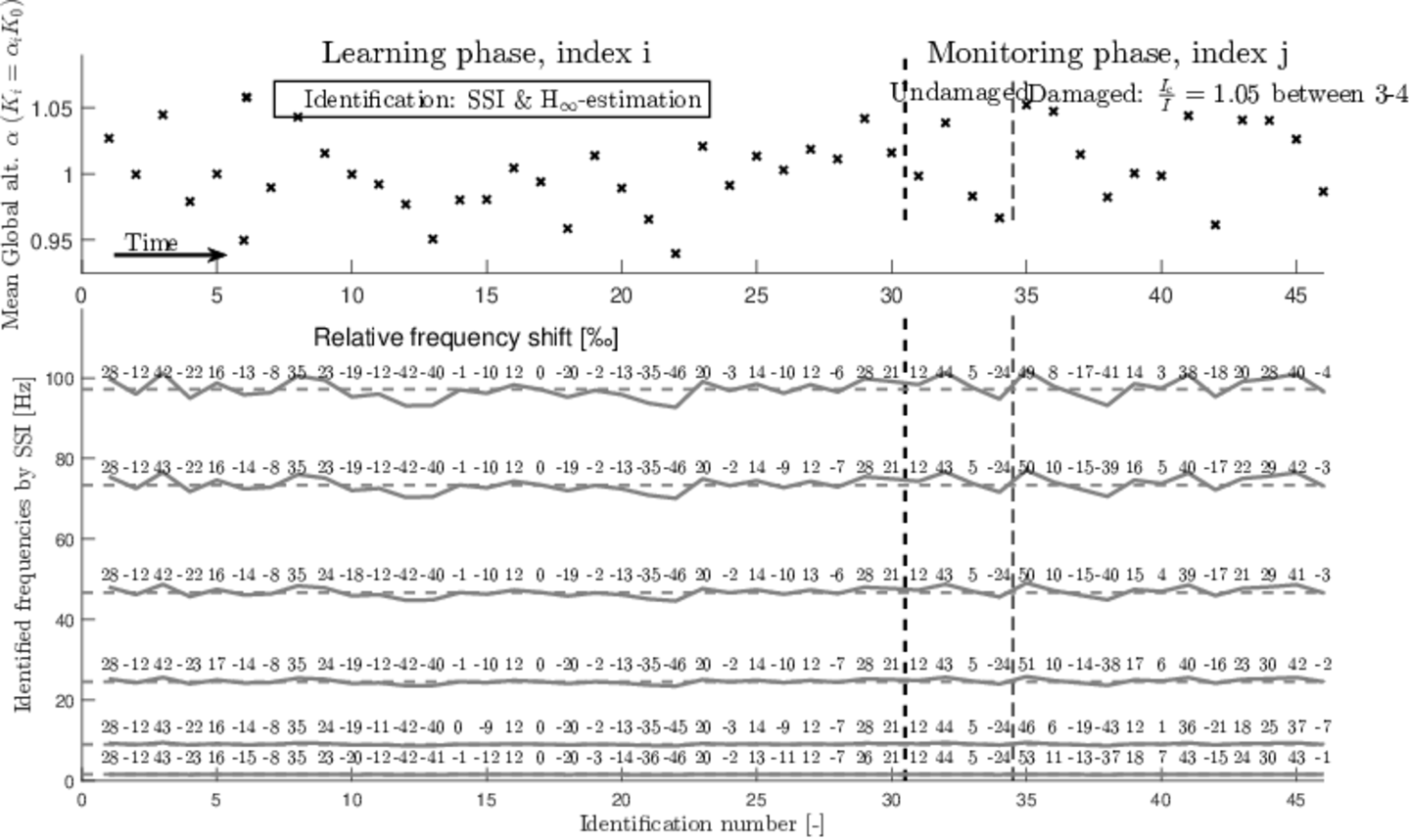Consideration of the influence of environmental parameters in the identification of a mechanical structure
Motivation
The project deals with the influences of secondary effects on the damage identification and localization of mechanical structures under ambient excitation (e.g. wind, waves, traffic, etc.). In addition to the usual static and dynamic loads, mechanical structures are also affected by environmental and operational conditions (EOC) such as temperature, humidity or motors of a ventilation system. In experimental laboratory tests, such influences can either be excluded or kept constant and therefore neglected. In contrast, for real mechanical structures, these influences are largely unknown in their interaction, their respective characteristics and their specific influence on the dynamic behavior. The environmental and operational influences are of significant importance for the structural monitoring of mechanical structures during operation. For example, changing environmental conditions can cause a change in the natural frequencies, which hinders or even makes it impossible to localize damage during a frequency analysis. The inclusion of EOC is essential for structural monitoring, as this is the only way to relate the externally induced fluctuations in structural properties to the changes in mechanical parameters. The problem lies in the fact that structural damage is recorded as a local change in the mechanical parameters (mass or stiffness), while the EOCs exert a global influence on these parameters (e.g. temperature-dependent modulus of elasticity). The EOCs are diverse in nature and are never fully known on real structures. Assuming a large number of EOC classes, the mechanical structure can be considered as a linear parameter-varying system (LPV). The automated condition identification of mechanical structures during the utilization phase is an active field of research in the area of structural monitoring.
Objective of the research project
A frequently used approach is to integrate the EOC exclusively via basic physical principles (e.g. via FEM models). This can be very time-consuming, if not impossible. In addition, this approach has the disadvantage that it is based solely on assumptions about the mechanical system and not on real findings.
Due to these circumstances, a measurement data-based approach to system identification seems advantageous. Data science methods, which are ideally suited to finding and quantifying complex relationships from large amounts of data, are ideal for this purpose. Data science methods offer various approaches, whereby one of the most promising approaches is classification. The algorithms belong to the supervised learning methods and derive background information from the patterns in the data in comparison to known data. The already published method for damage localization state projections estimation error (SP2E) has already been extended in simulation so that it is possible to include the EOC. This approach is based on output-only measurements of the structures under investigation as a result of ambient excitation. This means that the EOC is not taken into account subsequently via statistical analyses, but is included in the method in terms of system theory. These methods are to be expanded and stabilized for use on real structures and then verified experimentally.
Procedure
The EOC is integrated in three phases. Firstly, a normalisation model is identified on the basis of an output-only structure measurement, for example using known SSI methods. The second phase is a learning phase in which the LPV systems are categorised according to the EOC that occurs. The third phase represents the life phase of a structure to be monitored. EOCs previously identified as significant are continuously measured and the structural state is monitored via output-only identification. An EOC process analysis can be carried out using the reference models and the EOC classes. For this purpose, an EOC vector space is formed, which maps the variable properties and allows damage localisation in the monitoring phase using SP2E.
Publications
Conference papers and scientific presentations
- Damage localization of mechanical structures considering environmental and operational conditions based on output-only system identification and H∞-estimation; M. Vollmering, M. Rohrer, A. Lenzen; Mechanical Systems and Signal Processing 156 (2021), 107572, 2021.


